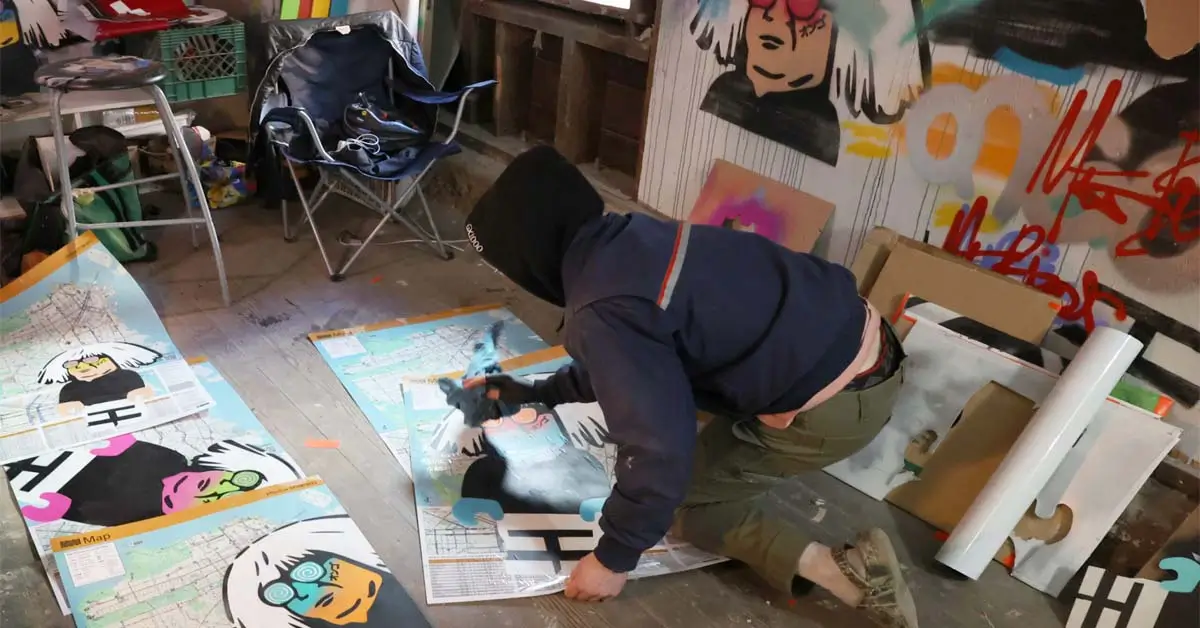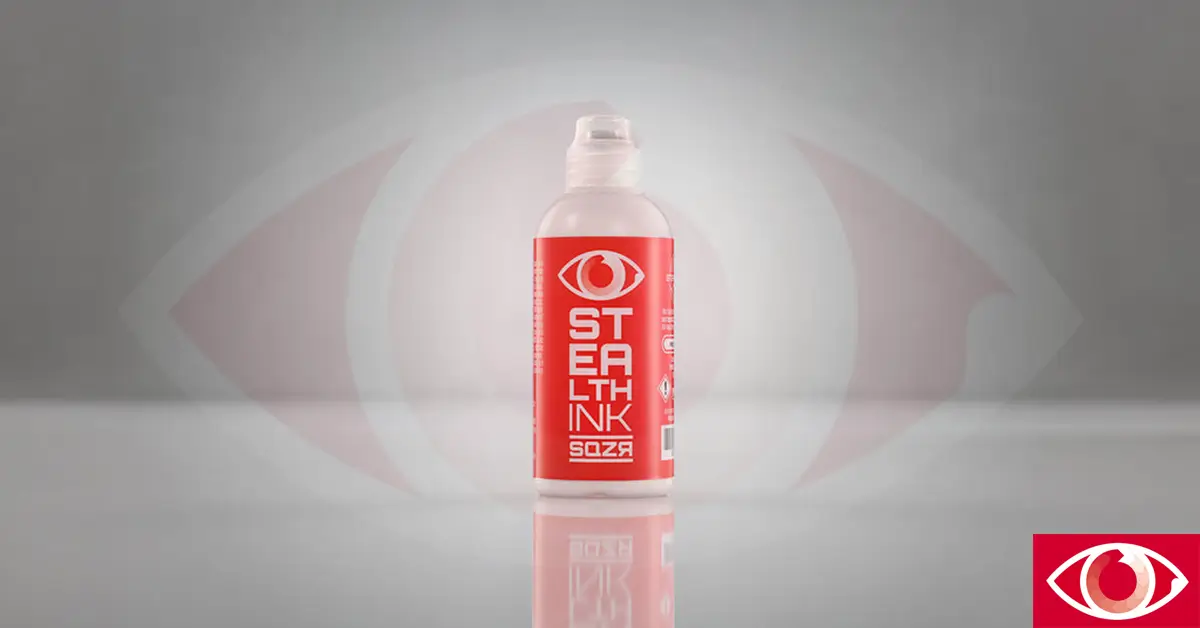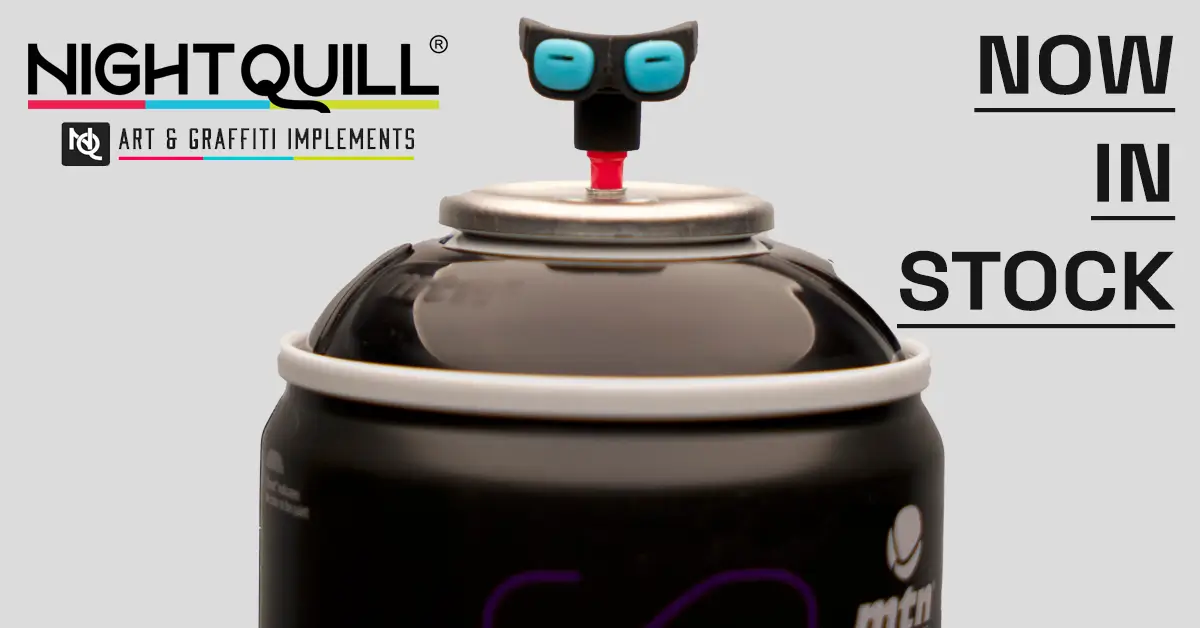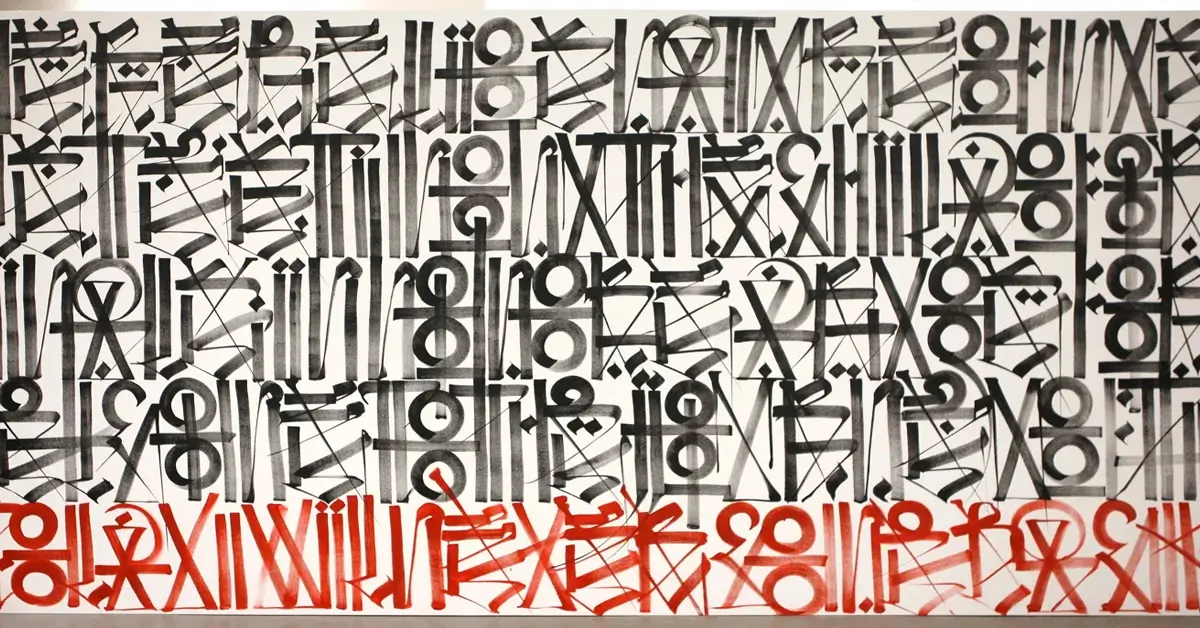San Francisco Street Artist Steals Municipal Property, Nets Thousands in Online Sales
If you’ve encountered a man sporting a distinctive look, featuring orange skin, green sunglasses, and a white wig while leaving his artistic mark around the city, then you’ve crossed paths with Ongo, a graffiti artist from San Francisco.
Ongo is renowned for leaving his tag on various urban canvases, such as sidewalks, electrical boxes, and even metal grates and Muni maps. At times, he has even removed these items from their rightful places and offered them for sale on his website, much to the consternation of the city’s residents.
An SFPD spokesperson emphasized, “What he is doing is a crime, and if he gets caught, he will be subject to arrest. The city of San Francisco does not grant individuals permission to deface, steal, or destroy public property.”
Rachel Gordon, a spokesperson for the Department of Public Works, added, “If the individual known as Ongo, or anyone else for that matter, takes a metal grate from someone’s sidewalk without their consent, that would constitute theft. Theft is a crime.”
Gordon also pointed out that removing these perforated metal grates creates a tripping hazard, and it’s the responsibility of the property owners living in front of them to replace them, incurring costs ranging from $10 to $30.
The city’s transit agency informed The Standard that they are actively working on a program to enhance the security of the city’s bus shelters and have made it clear that only art produced with their permission is allowed.
“While art is an integral part of our shelter program, it must be expressed in a legal manner that doesn’t result in permanent damage to the shelters themselves,” explained San Francisco Municipal Transportation Agency spokesperson Stephen Chun.
Nonchalantly sipping coffee and dressed in camo Crocs, layered jackets, with a latex fingerless glove adorning his left hand, Ongo expressed little remorse for his artistic endeavors on city property, especially when it came to those metal grates, which, in his opinion, were typically available for creative expression.

Ongo nonchalantly remarked, “I mean, about 70% of those things aren’t even properly secured in the ground. If I spot a bolt, I don’t bother, because you’ll find one down the block without it. If they really don’t want folks taking them, they should do a better job of making sure they’re firmly anchored.”
It’s Always Sunny in Philadelphia
The moniker Ongo finds its origins in a character named Ongo Gablogian, featured in a 2016 episode of FX’s TV series, “It’s Always Sunny in Philadelphia,” titled “Dee Made a Smut Film.” In this particular episode, actor Danny DeVito portrays a fictional art critic named Ongo Gablogian, using satire to lampoon the pretentiousness prevalent in elite art circles.
Ongo, seated at Ritual Coffee Roasters on Valencia Street, reflected on the show, remarking, “The show is silly and outrageous. That whole episode is like, ‘What is art?’ Why is something worth millions just because it’s painted by one particular person, even if it’s just scribbles and nonsense?”
It wasn’t until June 2020 that Ongo settled on the design inspired by the fictional character, making some stylistic adjustments, which included the distinctive orange skin and green sunglasses.

Ongo shared the story of his moniker’s creation, saying, “One day my buddy suggested, ‘Oh, Ongo would make a cool design.’ I painted it, and I thought, ‘Yeah, that’s it.'”
Getting Into Graffiti
Ongo’s journey into the world of graffiti art began when he was a 19-year-old student at the University of Wisconsin. It was in his hometown of Milwaukee that he encountered the mesmerizing sight of koi fish adorning the city’s streets. He later discovered that these colorful fish were the handiwork of Jeremy Novy, who had also left his mark on the streets of San Francisco.
Finding a street artist’s distinctive signature or artwork hidden beneath an overpass or in some obscure corner felt like a treasure hunt, establishing a unique connection between Ongo and the artist responsible. Ongo described it as feeling transported through time.
Moreover, Ongo was captivated by the creations of graffiti artist Shepard Fairey, renowned for his “Obey” design and particularly notable for his iconic Obama “Hope” posters and the eponymous clothing brand. Ongo explained, “His whole approach was about repetition, making people encounter the same image repeatedly and then making them wonder, ‘There must be some meaning to it.'”
In 2016, Ongo graduated with degrees in psychology and sociology and promptly moved to San Francisco, following his then-girlfriend who had relocated to the city for work. He initially dabbled in various tech recruiting jobs until early 2020, when he seized the opportunity to unleash his creativity. He painted his first Ongo design in June of that year, on the boarded-up window of a vacant storefront in the Mission district, a consequence of the COVID-19 pandemic’s impact on businesses.

Ongo embarked on his graffiti art journey, leaving his distinctive tag across various neighborhoods in the city, including the Outer Richmond, Inner Sunset, the Haight, and the Mission. Initially, it consumed nearly 45 minutes to create a single Ongo design. However, during a visit to À.pe, a store on 18th Street that specializes in paint, art, and clothing, he learned a valuable tip from a fellow graffiti artist that revolutionized his process, allowing the paint to dry almost instantly.
“Gold Bond powder,” Ongo revealed, sharing the secret behind his newfound efficiency.
$2,000.00 a Month In Sales
Ongo disclosed that he typically garners around $2,000 per month from the sales of his artwork through his website. On his website, he offers items like Muni bus signs, maps, and grates, which he has taken from the city streets and adorned with his distinctive logo.
“I believe people appreciate it because it’s like owning a piece of San Francisco,” Ongo remarked.
Nevertheless, the high cost of renting an apartment in the Mission District of the city substantially eats into the profits he manages to gather. With a chuckle, he revealed, “More than half,” emphasizing the substantial financial commitment it represents.

Ongo is resolute about remaining in San Francisco, drawn by his conviction that the city’s residents have a genuine appreciation for street art and bestow upon it a level of legitimacy that he believes would be lacking in his native Milwaukee. Additionally, he recognizes that individuals in San Francisco are more inclined to invest in and support art compared to those in his hometown.
He noted, “I know this can only continue in San Francisco. People value artists here. Back home, people see it as more of a little hobby.” This contrast underscores his commitment to the vibrant artistic community he has found in the city by the bay.
The Future of Ongo
Graffiti artists in the past have built their reputations by spraying their distinctive tags throughout cities and leveraging their brands for recognition and income, with examples including street artist Fnnch, renowned for the iconic honey bears.
At this point, Ongo isn’t particularly preoccupied with expanding his artistic endeavors. His primary focus is on making ends meet and covering his bills before venturing into further monetization of his burgeoning brand. Nevertheless, he does acknowledge that streetwear, akin to brands like Obey, has crossed his mind as a potential avenue of interest.
Ongo summed up his journey and outlook by saying, “Ten years ago, the idea of living here seemed unimaginable. Five years ago, the thought of being a full-time artist felt just as far-fetched. I believe in taking small steps every day and seeing where it leads.” His perspective reflects a commitment to gradual progress and a belief in the transformative power of consistent effort.




